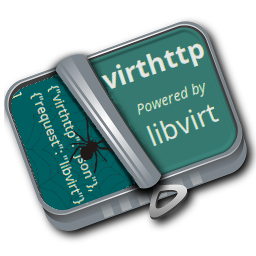The purpose of this project is to provide a web HTTP based frontend to libvirt. We use Boost.Beast, a minimal C++ HTTP server that is used to communicate between the web and the libvirt daemon. We use JSON to transmit data between the server and the client.
We also created a C++ binding for libvirt, and use it to interface with libvirt.
curl -X GET "http://localhost:8081/libvirt/domains" \
-H "Content-Type:application/json" \
-H "X-Auth-Key:1234567893feefc5f0q5000bfo0c38d90bbeb" \
-H "X-Auth-Username:smith"{
"results": [
{
"name": "vm1",
"uuid": "f6ah2js8-dfgv-3f3f-fgs1-d2s09dhjej83",
"id": -1,
"status": "Shutoff",
"os": "hvm",
"ram": 4194304,
"ram_max": 4194304,
"cpu": 4
},
{
"name": "vm2",
"uuid": "8shfjaif-f8s9-12vg-ger5-e5hbt78n4bhe",
"id": 2,
"status": "Running",
"os": "hvm",
"ram": 4194304,
"ram_max": 4194304,
"cpu": 4
}
],
"success": true,
"errors": [],
"messages": []
}For more examples and a usage reference, see the API documentation
!! IMPORTANT !!
While compiling for any other target than Linux or BSD based OSes, there is no platform-dependent code in this repository.
Also, we currently only test with Clang [7,8,9] and GCC [8,9]
- libvirt-dev
- libboost-system-dev
- libdeflate-dev
$ git clone https://github.com/HeavyEyelid/virthttp.git
$ git submodule update --init --recursive
$ cd virthttp/
$ mkdir build
$ cd build/
$ cmake ..
$ make -j $(nproc) # or simply 'ninja' if you use ninja-build
This project uses Doxygen for its developer documentation.
To generate the HTML version from the code, simply run doxygen Doxyfile at the root directory of this repository;
you will find the generated HTML in a new doc/ folder.
